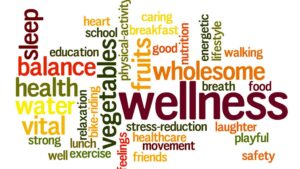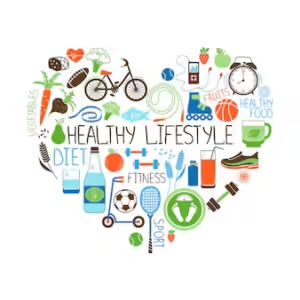
Health and Wellness Trends 2024: A Comprehensive Guide
In today’s fast-paced world, understanding and adopting the latest health and wellness trends for 2024 is crucial for improving overall well-being. With more individuals seeking effective ways to enhance their physical, mental, and emotional health, a variety of impactful trends have emerged. This comprehensive guide explores these top health and wellness trends for 2024, providing valuable insights into the most current and relevant practices.
1. Mental Health Awareness and Support
Mental health has gained significant attention in recent years. The increasing recognition of its importance is reflected in various support systems and campaigns.
- Teletherapy and Online Counseling: The rise of teletherapy and online counseling platforms such as BetterHelp has made mental health care more accessible.
- Mindfulness and Meditation: Apps like Headspace and Calm are leading the way in providing guided meditation sessions to enhance mental clarity and reduce stress.
2. Personalized Nutrition and Diets
Personalized nutrition is becoming increasingly popular as one-size-fits-all diets prove ineffective for many.
- DNA-Based Diets: Services like 23andMe offer DNA testing that provides insights into genetic predispositions and dietary needs.
- Plant-Based and Flexitarian Diets: Interest in plant-based diets and flexitarian approaches is growing due to their health benefits and environmental impact.
 Life of various people
Life of various people
3. Fitness and Physical Activity Innovations
The fitness industry continues to evolve with new innovations to keep individuals motivated.
- Wearable Fitness Technology: Devices such as Fitbit and Apple Watch are now equipped with advanced features like heart rate monitoring and personalized workout plans.
- High-Intensity Interval Training (HIIT): HIIT workouts are popular for their efficiency, providing maximum benefits in minimal time.
- Virtual Fitness Classes: Platforms like Peloton and Mirror offer diverse classes from the comfort of home.
4. Holistic Health Approaches
Holistic health integrates physical, mental, and emotional well-being.
- Integrative Medicine: This approach combines conventional medicine with alternative therapies. More information on integrative medicine can be found at UptoSkills.
- Functional Medicine: Focuses on root causes of disease and prevention, using a combination of traditional and alternative treatments.
5. Gut Health and Microbiome Research
The role of the gut microbiome in overall health is becoming clearer.
- Probiotics and Prebiotics: Essential for maintaining a healthy gut, these supplements support digestion and immune function.
- Fermented Foods: Incorporating foods like yogurt, kefir, sauerkraut, and kimchi into your diet can enhance gut health.
6. Sleep Optimization
Improving sleep quality and duration is critical for overall health.
- Sleep Tracking Technology: Devices and apps that monitor sleep patterns help optimize sleep quality. Explore options at UptoSkills.
- Sleep Hygiene Practices: Establishing a consistent sleep routine and creating an optimal sleep environment are essential.

7. Environmental Wellness
Creating a healthy living environment and reducing exposure to harmful substances is crucial.
- Sustainable Living: Practices such as reducing plastic use and supporting eco-friendly products contribute to environmental wellness.
- Air Quality Improvement: Improving indoor air quality with air purifiers and indoor plants can positively impact health.
8. Digital Detox and Mindful Technology Use
Excessive technology use can negatively affect health, making digital detox important.
- Screen Time Management: Setting limits on screen time and taking breaks from digital devices can improve mental and physical health.
- Tech-Free Zones: Creating tech-free areas in the home encourages face-to-face interactions and better sleep.
9. Alternative Therapies and Practices
Alternative therapies complement traditional medical treatments.
- Aromatherapy: Using essential oils for therapeutic purposes can reduce stress and improve mood.
- Sound Healing: Practices like sound baths and gong therapy promote relaxation and healing.
10. Financial Wellness
Financial stress can impact overall health, making financial wellness crucial.
- Financial Education: Access to financial literacy programs helps manage debt and plan for the future.
- Mindful Spending: Being conscious of financial habits and aligning spending with personal values can improve quality of life.
Conclusion
Health and wellness trends for 2024 emphasize a holistic approach to well-being. By incorporating these trends into daily life, individuals can enhance their physical, mental, and emotional health, achieving a balanced and fulfilling lifestyle.
Outbound Links:
Internal Links:

 Life of various people
Life of various people![]()
